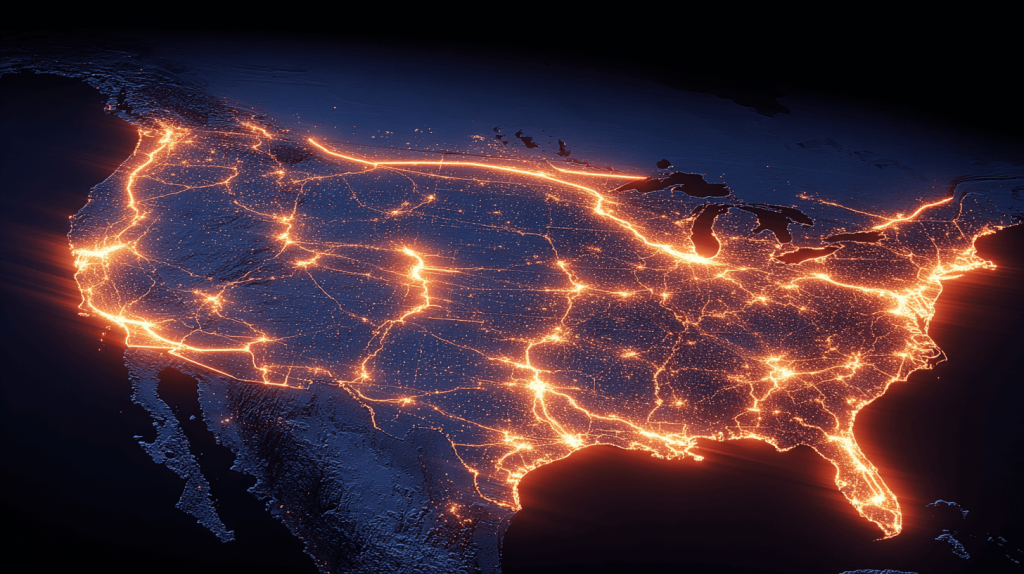In today’s global e-commerce market, the importance of protecting your products and brand on an international stage is more essential than ever. In 2020, consumers worldwide spent over $4.2 trillion dollars on global e-commerce sales. While much of the world was subject to strict COVID-19 protocols, global web sales increased over 20% from 2019 as the world shopped from their living rooms and home offices.
However, along with this massive expansion in digital retail sales came the inevitable increase in counterfeiting and trademark infringement. This left many e-commerce businesses wondering whether there was any way to protect their products and brands internationally. The answer is yes. By securing international trademark registrations, e-commerce businesses may now protect their trademarks globally.
Can a U.S. Trademark Protect You Internationally?
A trademark is the cornerstone of the brand identity for every business and is often one of its most valuable assets. A trademark can be any word, phrase, logo, symbol, design, or expression used to identify the source and origin of goods and services. While many people understand that importance of filing a U.S. trademark application, one of the most common questions we encounter is whether a U.S. trademark registration will protect trademark rights beyond the U.S.? No, a U.S. trademark registration will only protect trademark rights within the U.S. and does not extend beyond the boundaries of U.S. jurisdiction.
If you are looking to protect your goods and brand internationally, you will need to file an international trademark application in each country you seek protection or utilize a multinational filing system such as the Madrid Protocol (discussed in more detail below) or European Union Trademark System.
In the past, filing for international trademark protection was inconsistent and confusing as each country had its own internal laws and regulations governing their trademark application process. Filing often required an applicant to retain a foreign trademark attorney to navigate the specific trademark laws and regulations of each country and the filing requirements for each foreign trademark office. However, with the advent and implementation of various multinational filing systems and treaties, the international trademark application process has become much more efficient for foreign and domestic businesses to navigate.
Today the process has become so streamlined that an applicant can file one trademark application to protect their business in their “home” country and, if granted, can gain protection in all 112 Madrid Protocol member countries. Similarly, an applicant can file one application with the European Union Trademark (EUTM) System and, if granted, gain protection in the 27 different EU member countries.
What Are the Advantages of International Trademarking?
There are several advantages when deciding whether to file an international trademark application. One advantage is that multinational filing systems allows an applicant to file one application in a single language for a single filing fee and gain protection in all selected member countries. For the Madrid Protocol, this includes recognition in an expanding list of over 112 countries. Once granted, the trademark owner will have gained exclusive right to use their trademark in connection with the goods or services identified on the registration certificate for the mark in each member country.
One of the most undervalued advantages for international trademarks is the trademark owner’s ability to register their mark with various foreign customs offices to help identify and seize or otherwise prevent distribution of counterfeit products. Domestically, U.S. Customs and Border Protection (CBP) is a division of the United States Department of Homeland Security and plays a vital role in policing and seizing counterfeit products from entering the U.S. Other countries have similar enforcement offices.
Trademark owners can register their marks with CBP and these foreign offices on their Intellectual Property Rights e-Recordation Website and analogous websites at nominal fee. Registration enables CBP and these offices to identify and stop the importation of infringing goods at their port of entry. For businesses that frequently encounter counterfeit matters, CBP and foreign customs office registrations can be an invaluable tool.
How Do I Trademark My Business Name or Logo Internationally?
Since filing a U.S. trademark application with the USPTO is a prerequisite for filing an international trademark application, let’s begin with the process of domestic application filing.
As a person or business, you can apply for a trademark registration through the U.S. Patent and Trademark Office (USPTO). Using USPTO systems, you can perform the following actions:
- Search the U.S. Patent and Trademark Office database to ensure the desired name, logo, and/or tagline have not been registered by another entity. A thorough trademark clearance search will ensure mark is not being used by a third party or further identify any confusingly similar mark within the same class of goods or services.
- File a trademark application online through the USPTO’s Trademark Electronic Application System.
- Pay the application fee for the U.S. trademark with the USPTO ($250 for TEAS Plus/$350 TEAS Standard).
1. File a Trademark Application in a Home Country
Once your U.S. trademark application has been filed and your documents have been uploaded to the Trademark Status and Document Retrieval System, you are ready to apply for an international trademark application through the USPTO and to designate (i.e., select) your desired countries.
Here are the basic requirements for U.S. applicants when preparing and filing your international trademark application through the Trademark Electronic Application System International (TEASi):
- Complete Trademark Electronic Application System International (TEASi).
- Ensure the basic application and international application list the same trademark and business owner.
- Verify the list of goods or services on the domestic trademark application are the same as listed on the international application. Please keep in mind the international application is also allowed to have a narrower scope of goods and services.
- Pay a certification fee of $100 per class of goods or services (fees may change with no notice, so check with the USPTO fee schedule before filing).
- Identify one or more countries where you desire trademark protection.
The USPTO will review your application to ensure that it meets the filing requirement of 37 C.F.R. § 71(a). If all eligibility requirements are met, the USPTO will certify the international trademark application and forward it to WIPO’s International Bureau for formal examination.
2. International Bureau Review
The WIPO International Bureau will review the trademark application and ensure all filing fees for the desired countries have been paid. If so, WIPO will formally examine the application, register the mark in the International Register, and publish the international registration in WIPO’s Gazette of International Marks. WIPO will then issue a certificate of registration and notify the designated countries’ intellectual property office. At the same time WIPO will inform the USPTO.
3. Designated Country Review
Each country designated on the international application will then independently examine your trademark application and may open an “opposition” period for your mark. Each country has its own national standards for granting or approving trademark applications. If a country does not refuse your mark or an opposition is not timely filed, WIPO will issue a grant of protection for the designated country.
What Is the Madrid Protocol and How Does It Impact Your Trademark Rights Internationally?
The Madrid Protocol is the largest multinational trademark registration system administered by the World Intellectual Property Office (WIPO) in Geneva, Switzerland. The Madrid Protocol was created to enable multi-country trademark applications to be filed with a single country’s trademark office in a single language, and in local currency without the hassle of individual filing with each desired country’s trademark office.
Under the Madrid Protocol, a trademark applicant can avoid filing a separate application for trademark registration in each country. As such, the applicant can file an international application in their home country that will be forwarded to the WIPO’s International Bureau and designated countries’ intellectual property office bypassing the hassle of having to retain local counsel to work with each country’s trademark office.
The Madrid Protocol gained its name because it is historically based on two treatises: the Madrid Agreement Concerning the International Registration of Marks in 1891 and the Protocol Related to the Madrid Agreement in 1996. These were agreed on by member countries after diplomatic conventions were held in Madrid, Spain in 1996.
Who Can Use the Madrid Protocol?
Any business operating within the 128 member countries can register a trademark internationally through the Madrid Protocol. Anyone who is a citizen, resident, or operating an industrial or commercial establishment within member nations can take advantage of the benefits of the international registration system.
How Many Countries Use the Madrid Protocol?
There are 112 members from 128 countries that adhere to the Madrid Protocol. They are considered members or contracting parties of the Madrid Union. These countries collectively account for 80% of world trade. Membership in the Madrid Union is open to expansion and further growth.
European Union Trademark System
The European Union trademark system allows a trademark applicant to register a trademark at either or both the European Union (EUTM) at the European Union Intellectual Property Office (EUIPO) and with each individual country’s trademark office. Similar to the United States, the EUIPO provides an online system for filing a trademark application in a single language for a single fee of approximately €850. The application will be substantively reviewed and, if granted, will be renewable for a 10-year term.
How Much Does It Cost to File a Trademark Application Internationally?
There are basic fees for international registration plus additional fees based on the classes of goods and services.
The basic fee for a trademark application under the Madrid Protocol is 653 Swiss francs for a regular mark and 903 Swiss francs for a mark in color mark. For businesses in developed countries filing an international application in an intellectual property office of a less developed country, the basic fee will be reduced by 90% or around 65 to 90 Swiss francs.
An example published by WIPO describes an international trademark application for a business in India and the European Union for one class of goods and services.
The basic registration calculation will look like this:
Basic fee – 653 Swiss francs + one class of goods in India – 148 Swiss francs + one class in the European Union – 897 Swiss francs = 1,698 Swiss francs
There will be additional fees if you expand trademarks to another contracting party, modify or renew the trademark services, or expand the class of goods or services.
Can You Run an International Trademark Search?
Unfortunately, there is no single trademark search engine that allows an applicant to search every country’s trademark database and thereby perform a comprehensive worldwide conflict search. However, WIPO has created the global brand database over more than 52 million records from 73 national and international sources where you can filter and search for international trademarks using the following:
- Brand – through text, image class, and the type of goods or services
- Names – trademark holder and representative
- Numbers – registration and application numbers
- Dates – registration date, application date, and expiration date
Money-Back Guarantee Trademark Applications
At the Rapacke Law Group, our team of trademark attorneys are so confident that we will get your trademark application allowed that we are now offering a money-back guarantee with your trademark application. Should your trademark application not be allowed for any reason, we will provide a 100% money-back guarantee of any fees paid.
At Rapacke Law Group, we will be with you through every step of the process and here to listen to and answer all your questions about international trademarking.
Schedule a free consultation or take our Intelligent IP Quiz to see what type of IP Protection is the best fit for you.
Related Articles: State Trademark vs Federal: What’s The Difference and Which Is Right for You?




